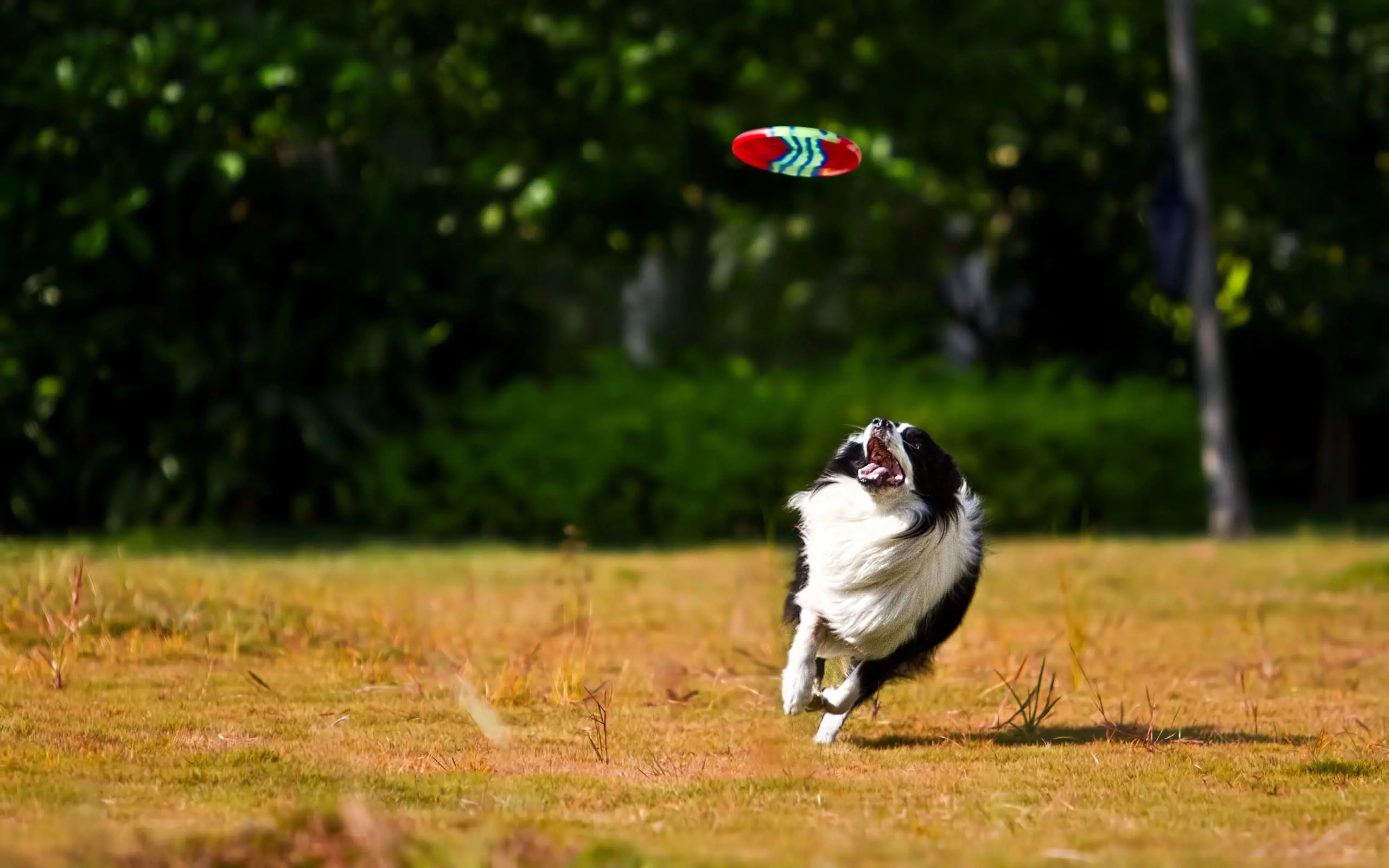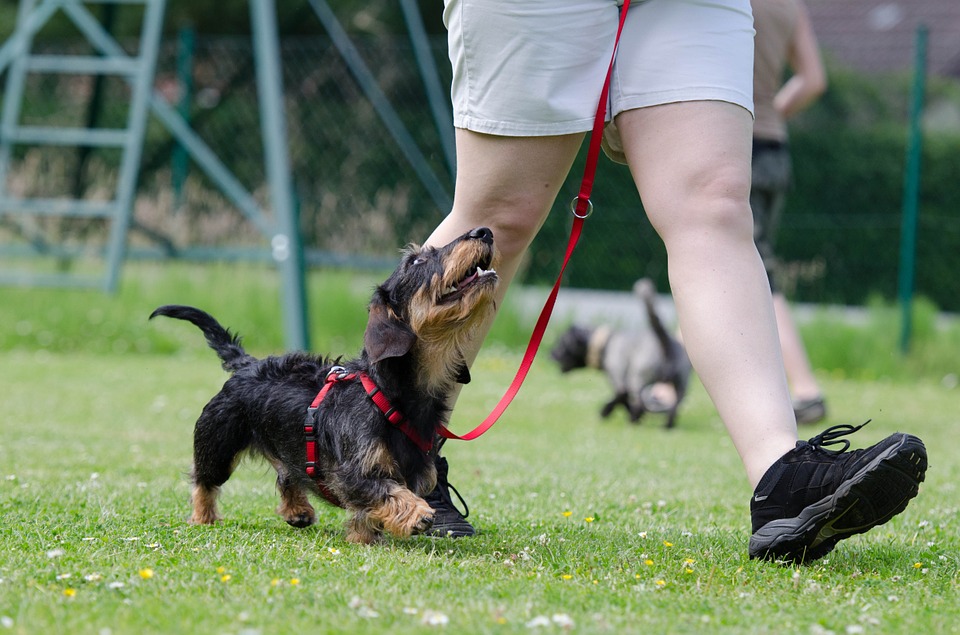What types of tricks can I train my dog to do?
19th July, 2019

Teaching your dog to do tricks and commands is one of the best bonding experiences you can have with your pet.
As the RSCPA tells us, good training can improve a pup’s quality of life. Taking your pup to puppy training classes could be one key way in achieving this.
It can also keep you both active, beat boredom and give you greater control over your pet’s safety when you’re out and about on walkies.
Mastering the basics commands
Before you get on to teaching your puppy (or old dog!) new tricks, you’ll need to get the basics nailed down. Remember, even these basic commands are like tricks to your pooch, even though they will be taught primarily for their own safety.
Having a good grasp of the basic commands means you’ll have a canine that is calmer, happier and well behaved, as the Blue Cross explains.
Reward is the key motivator for your dog. If it gets rewarded for a certain action, it’s much more likely to repeat it – and this positive reinforcement with a treat or affection is the quickest way your dog will learn any new trick or skill.
Some of the basic commands every responsible dog owner should teach their dog include:
Sit – Crucial for when you’re out walking with your dog and you need it to wait on the pavement before crossing. It’s also better for your dog to sit when they meet new people, rather than jumping up, especially when being introduced to children.
Stay – This essential command will help keep your dog out of trouble, either keeping them away from other dogs or stopping them from running into traffic. Stay is best taught when your dog is hungry so they really understand the positive reinforcement of the treat when they’ve managed to stay still.
Come – You must be able to call your dog back to you when you’re out and about, and that means mastering the Come command. Expert dog trainer and author Brandon McMillan says that teaching a dog to come to you is easiest after they’ve mastered the skill to stay, so always teach these commands in that order.
No – To be used whenever you want your dog to drop something or be warned away from danger. This should make them stop whatever they’re doing immediately.
Off – If you don’t want your furniture ruined by your dog, Off is a key command to have at your disposal. McMillan recommends turning your back on your dog when they jump up to ensure you’re not giving the bad behaviour any attention.
Heel – Walking with your dog should be a pleasure not a chore, so the Heel command is definitely one to practice, especially if you have a large or boisterous pup that is hard to control in public.

4 fun tricks to teach your dog
Once you’ve got the basic commands under your belt, it’s time to have some fun!
Teaching your dog some simple tricks is not only fun for you, but it also helps with their mental agility – and of course they get rewarded with a sweet treat when they get it right!
Shaking hands
Shaking hands (or paws) is the perfectly polite way to greet friends and family and shouldn’t take very long to master if you practice for about five minutes every day. As with most tricks, you need to use a treat as positive reinforcement.
Show your pup the treat in your hand, then close your fist and place it next to your dog’s paw just a few inches off the ground. When he lifts his paw to touch your hand with the treat inside, reward him and catch his paw with your other hand.
Repeat the process, rewarding as you go, adding in the word ‘Shake’ later on as you take his paw. Keep repeating the process until you can eventually do it without any treats.
Waving
Imagine your partner coming home from work and being greeted with a little waving puppy in the window! The waving trick is relatively easy to teach with the positive reinforcement method using your pooch’s favourite toy or treat.
Check out this video from the RSPCA that shows you exactly how to master this trick, step by step.
Play dead
Learning the ‘lie down’ command beforehand will help your dog learn the ‘play dead’ trick. As The Spruce Pets explains, you should hold a treat close to your dog’s nose and then move it to the side so he has to roll over to get it.
Reward and repeat as necessary, adding in a fun word like ‘bang!’ when your dog has got the hang of it.

Take a bow
This trick is actually something dogs will do naturally. When they stretch, dogs tend to go into the ‘downward dog’ position, so all you need to do is say ‘take a bow!’ and then reinforce the behaviour with a treat when you see them doing it.
Eventually, you should be able to say the words without the treat and your dog should bow on command.
Find the phone
If you regularly misplace your phone, this trick could be a real timesaver – if you think your pooch is gentle enough! Make sure you protect the phone with some sort of cover before introducing it to your dog.
Place it a few inches away from you, but in plain sight, and ask him to fetch, saying ‘yes’ as positive reinforcement the closer he gets. When the dog touches the phone, acknowledge the action with the words ‘find the phone’ and then reward the dog when he brings it back.
Repeat the game moving the phone further and further away each time.
Dog insurance
All the training in the world can’t protect your dog from accidents or ill health and that’s where dog insurance cover comes in.
Visit Purely Pets today and we can provide dog insurance quotes quickly and easily, helping you to find the best cover for your budget and circumstances.
We offer three levels of cover – accident only, 12-month and lifetime protection – so you can choose the one that suits you and your dog best.
Not only will you have access to a 24-hour vet helpline, you’ll also be able to see your policy documents online, giving you the flexibility to manage your documents as and when it suits you.
What’s the secret to finding quality dog insurance? There’s no trick, just visit Purely Pets today!
Helpful Pages
Recent Posts
Pet Insurance Quote
- 98% claims paid *
- Claims paid directly to vets
- 24/7 vet video consultations
- Interest free monthly payments




